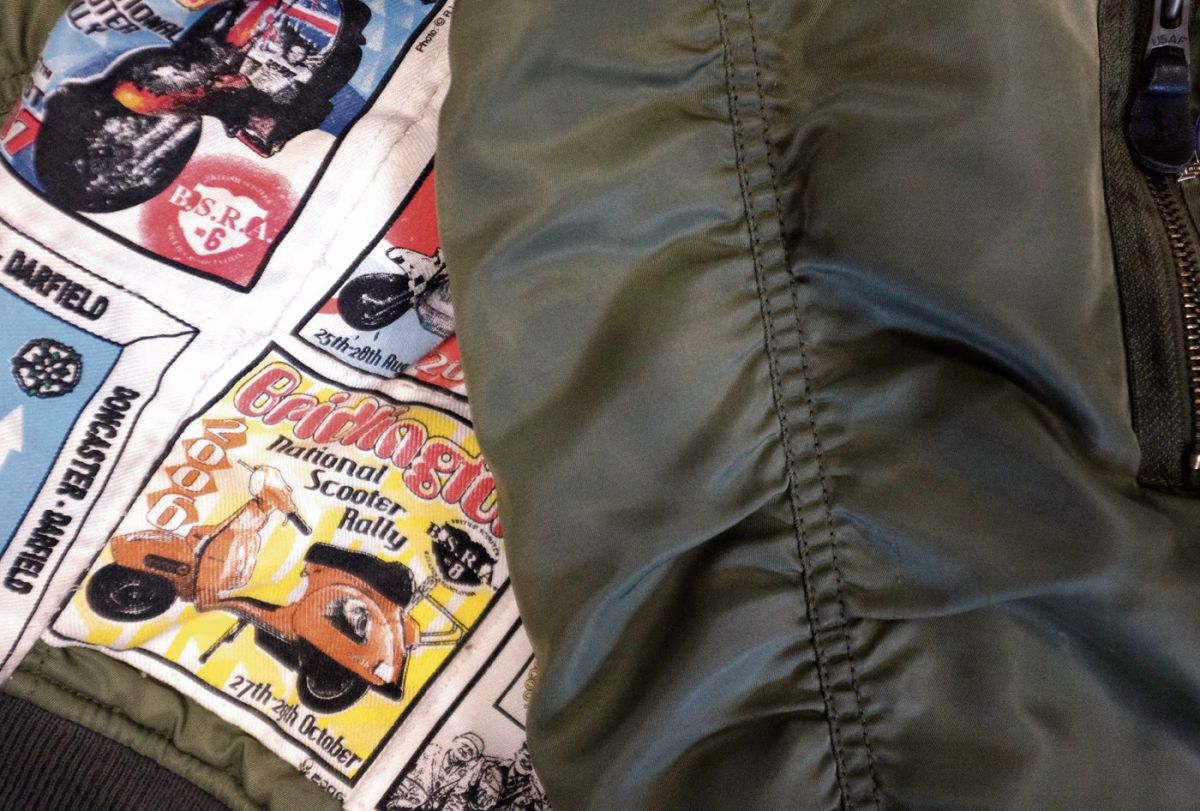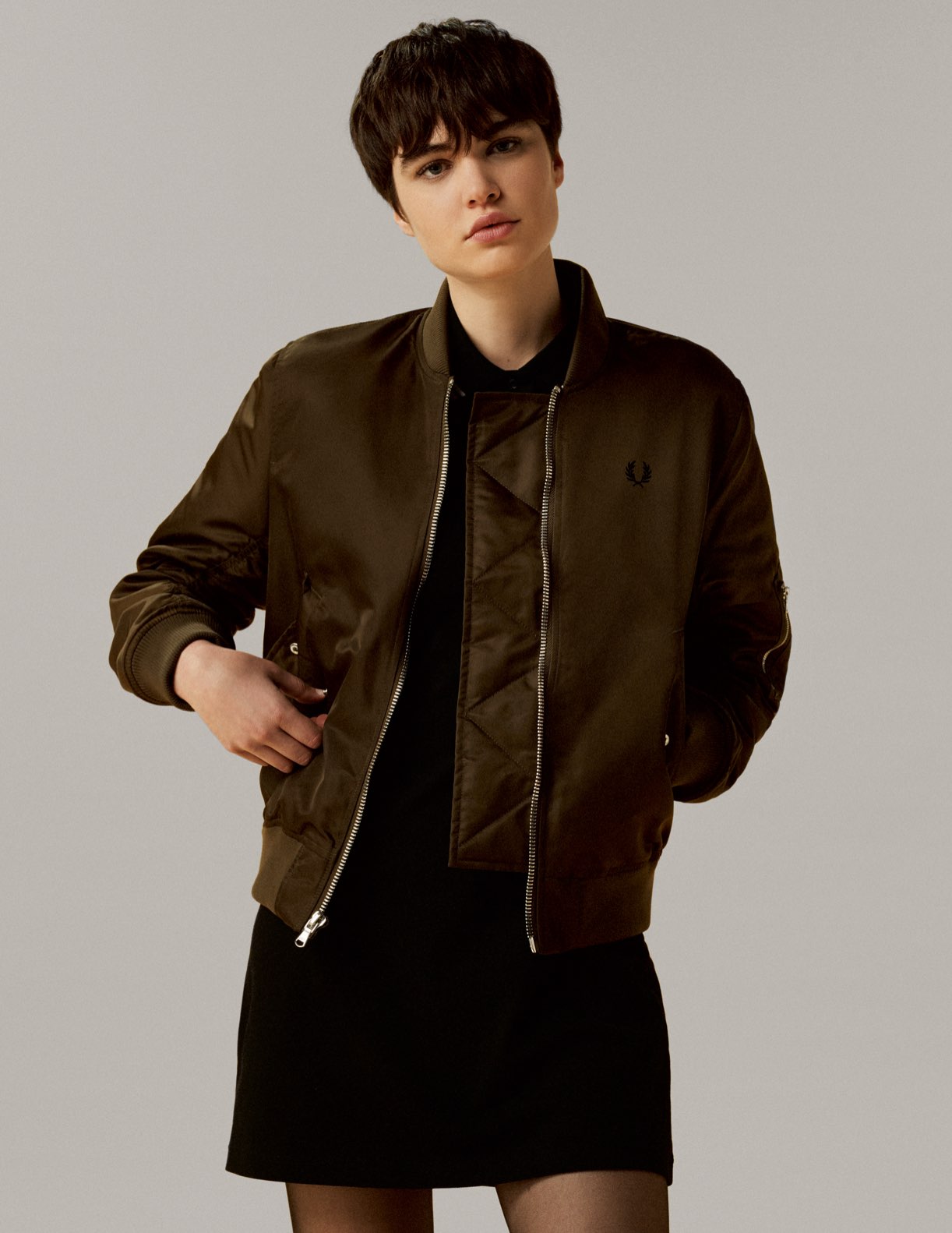“I’ve been into them since I was a teenager,” says Ben Freeman, a publisher and creative director whose multi-platform work for the likes of Dazed exists where DIY and digital collide. “They went from being for skinheads and punk girls at goth clubs, to the uniform of everyone at the raves we went to. Bombers represent a Venn diagram overlap of subcultures that I find tantalising. I once did a piece called Jacket Ripper, about a guy with a huge collection who got off on hearing nylon being torn. It was relatable, but I wouldn’t ruin a good jacket.”
Rising filmmaker Dan Emmerson has a talent for documenting the raw creativity of modern youth culture. Growing up in Brighton in the early 2000s he was drawn to the local drum ’n’ bass scene.
“Bombers were few and far between, so they were cherished like cultural artefacts or relics. It became your identity.”
“If you wore one you were a junglist, end of. My mate’s brother used to MC, and he and his crew all had them, back in the day, and I remember thinking how rowdy they looked. But I could never have pulled it off!”
Joey and Rowan of The Rhythm Method sum it up this way: “It’s in our nation’s cultural DNA, it's always been there.” Like today’s bomber, their mix of pub rock, UKG and new wave captures the next generation’s take on street-level legends. “There's very little 'cult' stuff today. We want to resurrect that with our music; a sense of underground idiosyncrasy, a universe of ideas. The bomber belongs to that universe. Joey had one but lost it during The Great Escape festival. It was a long weekend, what can we say. We only hope the new owner loves it as much as he did.”



